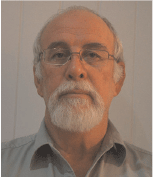Networked InField Compression for CSG field development
G. Hodgson A and V. Edwards BA Energy Process.
B Cameron Australasia Pty Ltd.
The APPEA Journal 52(2) 693-693 https://doi.org/10.1071/AJ11107
Published: 2012
Abstract
Driven by the LNG feed gas volume demand, recent large CSG field development in Queensland has been developed around large centralised compressor stations, designed and constructed on conventional gas project guidelines. Experience in the United States and Canada during more than four decades, however, has shown the best CSG reservoir performances and lifecycle costs are achieved with low capital cost, flexible infrastructure, and infield compression close to well heads. The Networked InField Compression System offers CSG producers significant advantages compared with centralised systems.
The model comprises a grid network of well heads; low, intermediate, and high pressure pipelines; integral infield compressors, and booster compression stations. The model differs from traditional models in a number of ways. The majority of wellhead infrastructure and compression is relocated back in the field, reducing costs and inspection requirements. Low horsepower integral infield compressors are gas driven, pipeline losses are reduced and use 30–40% less BHP than screw compressors, and skid-mounted for simple and cost-effective relocation.
Coiled high pressure, low diameter flexible piping is used, which requires a narrow right of way, few connections, and can be ploughed in multiple lines from up to 5–8 km per day, depending on soil conditions.In addition to 30–40% improvements in capital expenditure and installation time, the Networked InField Compression model offers 20–30% lower operating costs and 10–20% more gas from increased flow levels and/or extended well life. Further, environmental impact is decreased by 20–40%, as land use, CO2 emissions; crew sizes and peak water flow are significantly reduced compared with centralised systems.

Guy graduated from the Royal Rhodesian Air Force as an aeronautical engineer and pilot in 1969. Since 1972, he has worked extensively in the petroleum and resources industries. As design and commissioning engineer with consultants Matthew Hall, Guy worked on African and North Sea projects. He later joined Worley Engineering in Perth as chief instrument design and commissioning engineer on the Woodside Rankin offshore gas platform. He also completed design and commissioning for the Santos Moomba gas conditioning project and Port Bonython export terminal. While managing director of specialist EPCM company, Energy Process Services Pty Ltd (EPS), he managed acquisitions, engineering design/redesign, construction, commissioning, and start-up operations on projects including the Vicksburg (Australia’s first offshore jackup production platform for Western Mining Petroleum), Doral Resource’s 70 mmscfd Gas plant, subsea and onshore pipelines at Onslow, and a number of gas processing and conditioning plants in WA and Indonesia. He later headed Energy Process Engineers, a JV between EPS and Minproc Engineers, undertaking EPCM in Indonesia, Singapore, and Malaysia. He then became CEO of First Dynasty Mines (FDM) Indonesian operations after EPS and its associates sold the Sembakung oil field to FDM. More recently, he has consulted to a number of Indonesian oil and gas and drilling service companies. |

Vernon has more than 15 years of experience in compression systems with industry experience in Australasia, Europe, Americas, and southeast Asia. He joined CompAir in New Zealand in 1993 as a sales engineer responsible for sales of industrial and gas compressors in the upper North Island. Promoted to sales manager in 1996, he was responsible for national sales, during which product development focused on efficiency of industrial compression installations and external finance. Based on successes in New Zealand, he introduced these programs to Australia and in 2002 he was relocated to corporate headquarters in the UK to head global sales for the program. In 2005 he took on CompAir’s global sales of oil free compression products. He was instrumental in bringing Quantima, the world’s first high speed centrifugal compressor with just one moving part in the compression element, to market. He joined Cameron in 2009 as sales director for Australasia and southeast Asia. He maintains a keen interest in efficiency and how compression systems can be optimised for lower capital and operational costs. |


